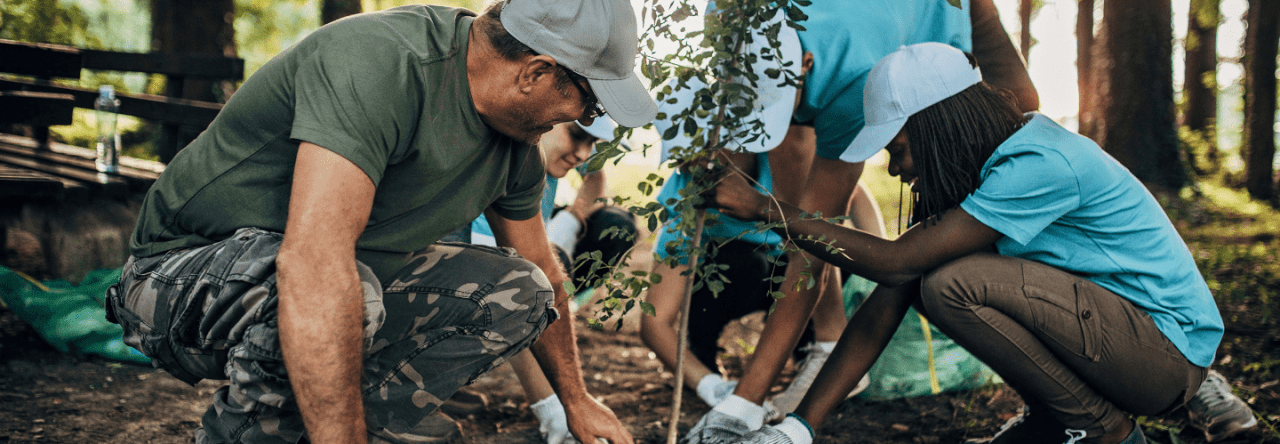Kathryn Edwards is NCVO’s volunteering development team assistant. She assists with projects supporting NCVO’s work on volunteer management and good practice and plays a key role in helping to organise Volunteers Week. Kathryn also supports the Investing in Volunteers Quality Standard, working with organisations attaining the standard.
Find NCVO’s original article here.
This week we celebrate Student Volunteering Week. This is a great time to recognise their significant contribution to the wider community, and to pay special attention to them as an invaluable source of time, talent, skills and creativity.
Having proudly volunteered and worked within a student volunteering charity, I’ve seen the extent of the role that student volunteers play throughout a city’s volunteering infrastructure. There were many essential roles fulfilled by diverse and energetic student volunteers, mostly benefiting people outside of their university. Research by IVR shows that 95% of student volunteers are motivated by a desire to improve things or help people, ranking higher than developing skills (88%) and gaining work experience (83%).
My top tips for involving student volunteers in your organisation.
1. Getting the opportunities right
Student volunteers have differing requirements, whether that is time commitments, varying skills or interests. Providing a broad range of opportunities will help you to recruit and retain them.
Be aware of their academic timetable and provide opportunities outside of the normal working day.
An NUS report states that the main barrier for students who do not currently volunteer was not having enough time; students said they would like to see more one-off opportunities to encourage them to volunteer. Student Volunteering Week is a perfect time to run one-off ormicro volunteering to give potential volunteers a quick snap shot of volunteering with your organisation and could potentially lead to students volunteering on a regular basis.
2. Create opportunities that develop skills
Think about what skills and experience the volunteer will need and gain from particular opportunities and include this within the volunteer role descriptions.
Even though a large majority of student volunteers are motivated by the desire to make a difference, developing their skills and getting work experience in meaningful roles is key to attracting student volunteers.
Opportunities that have skills which link with their academic course may seem more appealing to potential volunteers. The NUS report states that 40% of students said that education institutions linking volunteering opportunities to their course or academic qualification would encourage them to do more volunteering.
3. Provide clear and accurate role descriptions
Volunteer role descriptions must provide an accurate idea of the work the volunteer will be doing to avoid any misunderstanding. It should identify why the role is needed and the benefits to both the volunteer and the organisation as identified in the Investing in Volunteers standard.
Think about how you might adapt a role to meet the volunteer’s skills and requirements. Being able to provide materials in alternative formats, for example, audio and easy to read versions, can be extremely useful when trying to engage a diverse range of volunteers – which leads me on to…
4. Engage a diverse range of student volunteers
Think carefully about where you promote your volunteering opportunities. Is there a volunteering hub within the university/union to promote your opportunity? If not, try and build relationships with the Student Union and departments within the university to engage a diverse audience. Look at promoting in shops, cafes, libraries, magazines and newspapers that students regularly use and read. Think about the different groups and activities they might be involved in.
You could also work with existing student volunteers to spread the word. Ambassadors can provide real examples of their volunteering experiences and can help to produce creative recruitment messages that appeals to that audience. Using social media can help to share these messages through stories, photos and videos, and are a powerful way to inspire, engage and sustain student’s social action.
NUS research shows almost half of all students found out about volunteering opportunities through friends and family, with their place of study the second most common source of finding out about volunteering opportunities.
5. Support your student volunteers
Support and consistent communication is key to retaining volunteers. Volunteers should be provided with:
- a point of contact
- the opportunity to attend regular supervisions
- group meetings.
This also provides an opportunity to regularly recognise the contribution they have made.
In order to retain volunteers, they must feel valued and supported. The quality of support and communication they receive can determine how effective they will be as a volunteer.
Work with volunteers to clarify their interests and what they would like to gain from volunteering – this will help you to offer them the right kind of role and opportunities to develop.


 More than £42m has been axed from councils’ sports and leisure budgets since 2010, a BBC survey has revealed.
More than £42m has been axed from councils’ sports and leisure budgets since 2010, a BBC survey has revealed.







